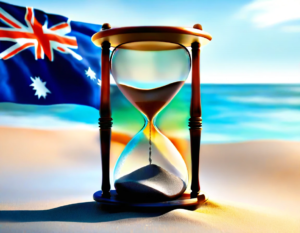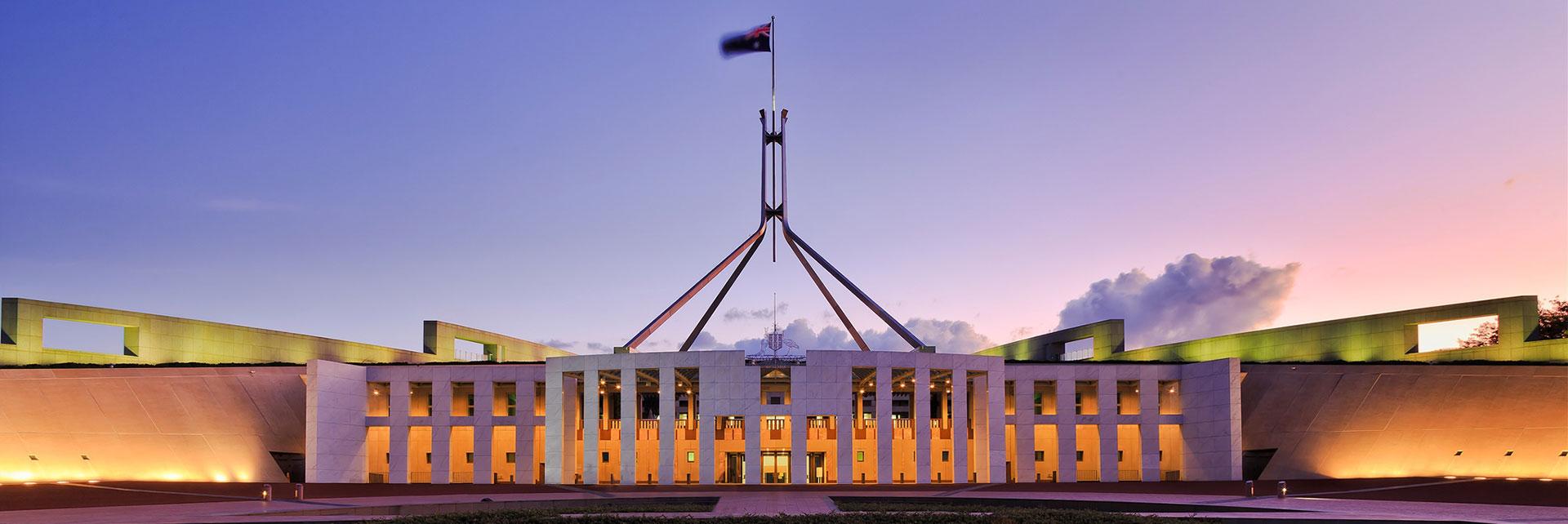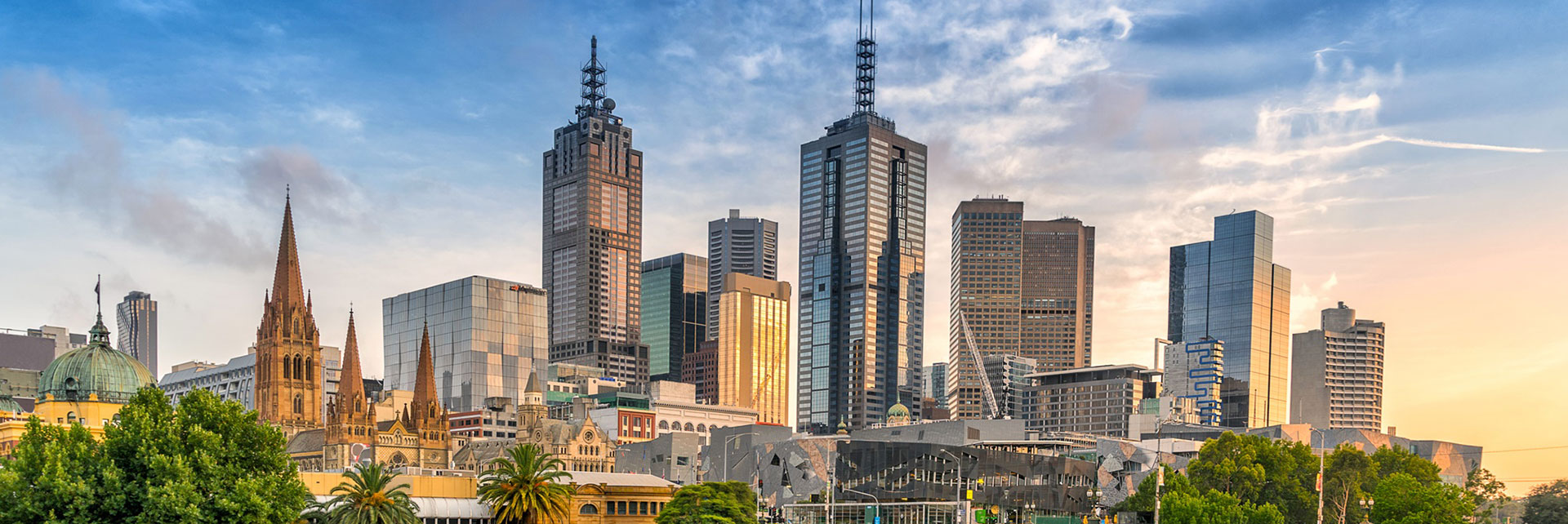Australia’s economic  woes take centre stage in the 2025 election
woes take centre stage in the 2025 election
For about a half a century, Australia’s economy has been the envy of the western world. A reliable commodities industry and a strong domestic economy has allowed Australia to weather every major global economic crisis without going into recession, living up to its reputation as the lucky country. But in the past few years, it has begun to look like Australia’s luck might be running out with the first recession in more than 30 years. Although special Government funding during the COVID-19 pandemic saved Australia from suffering the fate of many similar countries, the economy has struggled to fully recover since the crisis. GDP did continue to grow, chiefly due to immigration. But now, GDP per capita has fallen for four consecutive quarters. Australia’s recent economic track record is astonishing. It was nicknamed “the lucky country” in the 1960s because of its fortune in natural resources like iron ore, coal, copper and gold. This was the foundation of a vast global commodities export market to booming economies like Japan initially and then China.
Things seemed fine. But an abundance of natural resources can often be a curse as well as a blessing, because such economies can become dependent on commodity exports. In the Australian experience, demand for natural resources has periodically pushed up the value of dollar, making other exports more expensive and therefore less competitive, which puts a break on developing more complex industries like manufactures. Some African, Middle Eastern and Latin American countries with over-dependence on commodity exports have bred corruption and inequality, as politicians buddied up with big business and failed to redistribute export revenues more equitably across the population. This phenomenon, known as Dutch disease, partly explains the stagnation seen in many developing countries.
Fortunately, Australia avoided the worst of Dutch disease, due to a stable political environment and (some might say excessive) government regulation. This has allowed it to redistribute its national income for the benefit of the majority of the population and the domestic economy. This combination of a reliable export base and a strong domestic economy is in large part why Australia has enjoyed such success in recent decades. GDP grew every quarter from 1991 until the pandemic in 2020 – the longest period of growth ever recorded in the world. As a result, the country weathered the Asian financial crisis in the late 90s, which crippled its largest trading partner at the time, Japan. At the same time, a commodity boom driven by Chinese demand for Australian raw materials let the country sail through the global economic crisis of 2008.
Australia today has the 10th highest GDP per capita globally. Australians are some of the wealthiest people in the world. According to UBS annual Global Wealth Report, Australia today has the fifth highest mean wealth and the second highest median wealth in the world. Unlike other developed economies, many of which have experienced wage stagnation, since 2008, Australian incomes continued to grow during the 2010s rising by about 15% between 2008 and 2022.
However, that Don Bradman-like batting average appears to be coming into doubt with Australia’s first recession in nearly 40 years during the pandemic. After such a long run of prosperity and success, the nation has been shocked by its apparent inability to get out of it. Australia is nominally out of recession, but many attribute this to immigration. GDP per capita has actually been falling and at the same time, wages have stagnated at nearly 10% below their pandemic peak, living standards have been squeezed by inflation, causing nine consecutive quarterly declines in real household income, the biggest dive in living standards in recorded history.
So what is going wrong? Some of it could be attributed to tight monetary policy. Australia’s year on year inflation rate peaked to 8.4% in December 2022, falling to 3.4% in December 2023 before rising to 4% in May 2024. The Reserve Bank has been aggressively raising interest rates from 0.1% in 2022 to more than 4%, which has slowed the economy
Interest rates have been especially painful in mortgage costs, which is significant because property in Australia is ludicrously expensive. Australians spend a lot of money on mortgages and when interest rates go up, so do payments, squeezing household spending. That is true anywhere, but unique to the Australian experience is the fact that most of the population of nearly 27-million is concentrated in cities. Another factor is the Australian tax system, which with negative gearing and other tools, actively encourages treating property as an investment. For decades, people have watched in amazement as property prices continue to go sky-high, especially in cities. The ratio between the median house price and the median income has risen from about 3:1 in the 1990s to nearly 10:1 today, one of the highest in the world. High housing costs reduce domestic demand by forcing households to prioritise their spending on mortgage repayments or rent.
Australia’s commodity exports have been undermined by a combination of falling global prices with iron ore prices falling by an alarming 30% in 2023 and weak demand from China, which has been Australia’s largest export market for years now, but is currently struggling with its own economic problems. Added to that, Australia’s largest service export, education, has also come under pressure. Before the pandemic education, specifically overseas students coming to study in Australia, was our fourth largest export, behind coal, iron ore and natural gas. But in the past few years, a lack of reliable domestic funding has made the sector increasingly reliant on foreign students, who essentially subsidise domestic students. However, as immigration has become a politically salient issue, largely thanks to the housing crisis, the Australian government has responded by cutting student visas, putting even more strain on the education system.
In an election year, aggressive marketing by the Dutton-led Liberal-National Party (L-NP) Coalition is set to drive home to voters the economic woes faced by the country and lacklustre economic performance coming off a half-century of world record-breaking success. The besieged Labor Government of Prime Minister Albanese, already under pressure, now has to contend with failing political performance in the opinion polls. He has been valiantly trying to convince Australians that they are better off now than before he took office, but at the moment, that is proving to be a difficult sell. According to the Roy Morgan poll published on January 6, 2025, if a Federal Election were held now the L-NP would win, with a two-party preferred vote of 53% (up 1% since Christmas) compared to the ALP on 47% (down 1%).
With the federal election due in May (although the PM has control over the timing), the next few months will include big talk and, no doubt, big spin on the big issues affecting the future of the lucky country.







 woes take centre stage in the 2025 election
woes take centre stage in the 2025 election